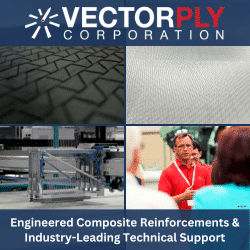
The Trailblazing Trailer
If you’ve spent time on a U.S. highway at any point in the past 30 years, you’ve seen a Wabash National semi-trailer. The company is the largest semi-trailer producer in North America, manufacturing more than 60,000 semi-trailers last year. But while the company is firmly established as an industry leader, president and COO Brent Yeagy has never been complacent. Four years ago, he implored senior leadership to look to the future to overcome its products’ performance barriers and improve the design of its semi-trailers. The result was the transportation industry’s first refrigerated trailer made with molded structural composites. Three months ago, Wabash announced it would begin a limited production run of 100 units over 18 months. According to Robert Lane, Wabash’s vice president of product engineering, the reaction to a 2016 concept trailer was so positive that the company acquired some early customers before it even built a prototype. They include transportation providers K&B Transportation, Werner Enterprises, Leonard’s Express and Combined Transport. Wabash was first introduced to the possibility of using composites in the trailer by Structural Composites, a Melbourne, Fla.-based company that was using unique composite technology for shock-mitigating Navy boats. Wabash assessed performance and economic metrics, then benchmarked how the technology might apply to trailers. Wabash opted to use composites, however the project came with a steep learning curve for everyone involved. “We had a lot to learn about semi-trailers and refrigerated truck bodies and what kind of loads they go through,” says Scott Lewit, president of Structural Composites. “And they had to learn from us about what composites can do.” Yeagy encouraged the team to push the boundaries and not be afraid to fail, recalls Lewit. “This approach allowed us to learn and innovate from failure and to rapidly develop and deploy new technology,” he says. Wabash used Structural Composites’ PRISMA® as the main material for the trailer’s entire box, which consists of the roof, walls, nose and floor. It provides excellent insulation qualities at a lower weight than conventional sandwich materials and has the necessary scalability to service a large market, says Lewit. CFRP can also be selectively utilized in the trailer to further reduce weight. Wabash utilized a combination of unidirectional and other orthotropic configurations of glass fiber. The company combines the PRISMA preform elements with several different resin combinations depending on the size and specifications of each part. Some parts feature vinyl ester resin, while others incorporate polyester or Structural Composites’ proprietary CoCure resin. In addition to PRISMA, Wabash used Structural Composites’ CoCure strain tunable coating technology for the trailer’s interior and exterior wall, roof surfaces and interior floor. The technology allows polyester resins and coatings to be combined with polyurethanes on the factory floor. The strain tuning aspect refers to the ability to change the urethane blend ratio, thereby altering the resin properties – in particular, the strain to failure. Wabash and Structural Composites also developed a method that allows direct lamination of metals. The CoCure Hybrid Metal technology improved performance, reduced cost and was rapidly advanced from the lab to deployment on road-qualified trailers, according to Lewit. Lane adds that Wabash experimented with vacuum infusion and RTM for the composite parts. The floors of the trailer were open molded, and the walls were closed molded. Lane says that in the long term though, the company is leaning toward making more of the trailer’s big parts through closed molding because it will be more environmentally friendly and lead to better part consistency and output. By incorporating molded structural composites instead of aluminum, Wabash improved the trailer’s overall thermal performance by up to 25 percent. The trailer’s floor is also up to 20 percent lighter than it would be with steel, and the system is far more puncture- and damage-resistant than conventional constructions. In addition, the company indicates that using molded structural composites for the floor system means the trailer can handle more weight – up to 24,000 pounds – compared to conventional refrigerated vans that are rated for up to 16,000 pounds. For Wabash, all of those advantages translate to a financially-viable solution. Lane says that one of the biggest barriers to the integration of composites in the trailer industry has been cost. Many resins are cost-effective but suffer from poor mechanical properties. Structural Composites’ PRISMA and CoCure technologies give Wabash scalable technology that provides great performance at an affordable price. The properties of the trailer, in turn, mean increased savings for Wabash’s customers. “When we talk about improving the thermal performance of a refrigerated trailer, that means real dollars to the customer because they'll use less fuel if it's more thermally efficient,” says Lane. He adds that customers are also attracted to the possibility of hauling less weight down the road, which also leads to greater fuel efficiency. Lane explains that the federal highway system in the U.S. mandates the weight of a trailer, tractor and payload cannot exceed 80,000 pounds. “So if they're already hitting that 80,000-pound limit and we give them 20 percent lighter weight in the trailer, then they can put more freight in the trailer,” Lane explains. While excitement abounds in the transportation and composites industries, Wabash is starting small so it can focus on documenting performance in real-world applications. Ultimately, Lane says everything is going according to schedule. As of May, Wabash had one trailer on the road and another in production. The company also has 20 truck bodies on the road and performing as expected.

SUBSCRIBE TO CM MAGAZINE
Composites Manufacturing Magazine is the official publication of the American Composites Manufacturers Association. Subscribe to get a free annual subscription to Composites Manufacturing Magazine and receive composites industry insights you can’t get anywhere else.



